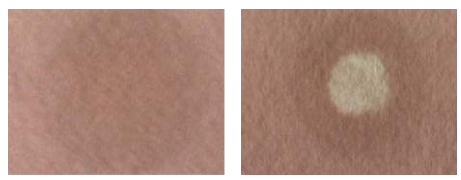Introduction to solder paste corrosion testing_Shenzhen Fitech

Introduction to solder paste corrosion testing_Shenzhen Fitech
Solder paste is a material used for electronic soldering, mainly composed of metal powder, flux carrier. Solder paste according to the cleaning method can be divided into two categories of no-wash type and cleaning type solder paste. Currently, the industry mostly uses the no-wash process. No-clean solder paste, as the name suggests, is the product production is completed after the residual flux activity on the product is limited, will not corrode the solder joints or components leading to abnormal product performance and functionality, so there is no need to clean. And cleaning type solder paste in the flux component activity is stronger, conducive to solder paste wetting solder interface, effectively remove the solder interface oxidation layer and the formation of normal solder joints; but the flux residue is easy to corrode the solder joints and metal parts, resulting in an open or short circuit, so after the completion of the soldering to be thoroughly cleaned.
In order to detect whether the flux components in the solder paste will cause corrosion or damage to the circuit board or components, the need for corrosivity testing of solder paste. There are several main methods for corrosivity testing of solder paste:
Test Method: Printing solder paste on the copper film, and then placed in a test chamber at 23~25°C and relative humidity of 50±5% RH for 24 h. The test standard is based on IPC-TM-2.3.32. Observe whether the copper film on the surface of the copper mirror has been removed and transmits the light, and based on the degree of penetration, it can be classified as L: no penetrating corrosion, M: penetrating corrosion <50, and H: penetrating corrosion >50%.

Figure 1. Extent of copper film corrosion on copper mirror test surfaces
The Copper Board Corrosion Test is designed to test the corrosiveness of flux residues on the substrate after soldering with solder paste. The test is performed in accordance with IPC-TM-650, 2.6.15. The solder paste is applied to the treated copper board and placed on a heated plate at 220°C to melt the paste, then cooled and placed in a hot humid environment (40°C, 90% relative humidity) for 96 hours. Comparison of corrosion before and after the damp heat test.The Copper Board Corrosion Test is designed to test the corrosiveness of flux residues on the substrate after soldering with solder paste. The test is performed in accordance with IPC-TM-650, 2.6.15. The solder paste is applied to the treated copper board and placed on a heated plate at 220°C to melt the paste, then cooled and placed in a hot humid environment (40°C, 90% relative humidity) for 96 hours. Comparison of corrosion before and after the damp heat test.
The test method is to use silver chromate test paper to test whether the halogen Cl- and Br- are contained in the flux. The flux is tested for the presence of the halogens Cl- and Br- by observing the colour change of the paper as the silver chromate paper develops a colour response to the halogens. The test method is in accordance with IPC-TM-650 2.3.33. Extract the flux from the solder paste and drop it onto the silver chromate test paper, after a period of time, carefully observe the colour change on the test paper, if it becomes white or whitish-yellow, it indicates that the flux contains halogens.

Figure 2. Silver chromate paper test
Above is the introduction of solder paste corrosivity test, through these test methods, you can assess whether the flux in the solder paste will cause corrosion or damage to the circuit board or components, so as to select the appropriate solder paste to improve the quality and reliability of soldering.

















 Back to list
Back to list



